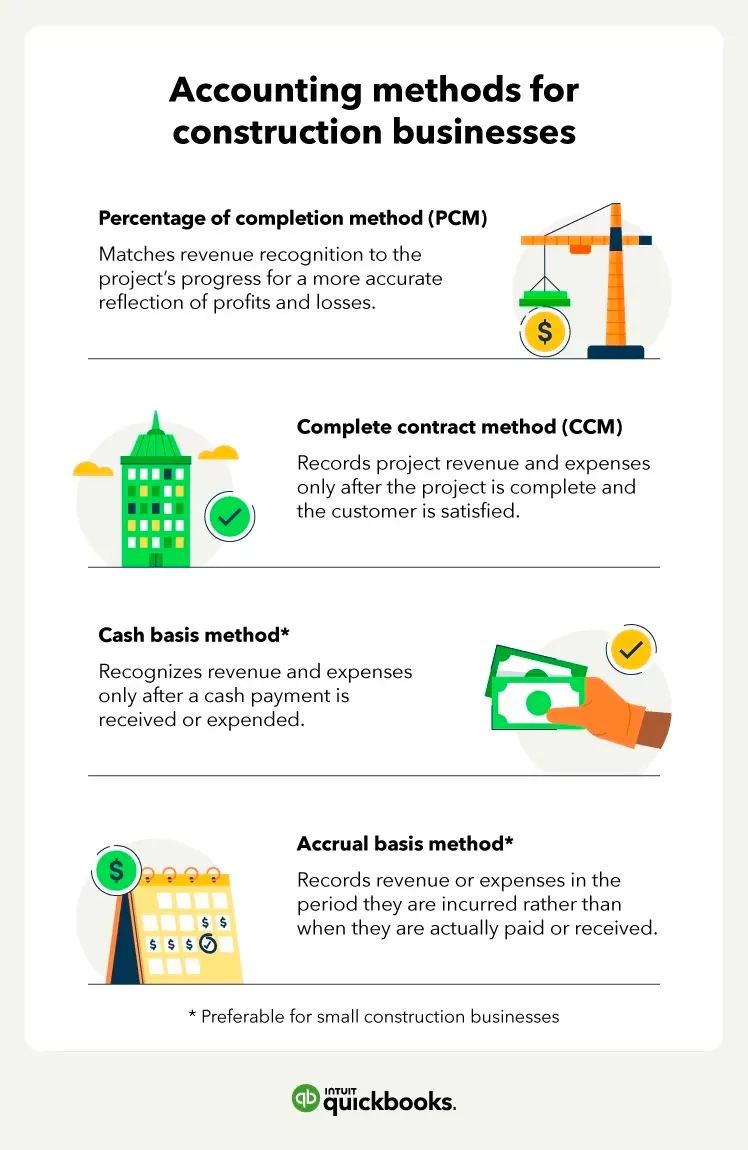Construction Accounting: A Guide to Properly Managing Costs and Financials
Construction Accounting: A Guide to Properly Managing Costs and Financials
Blog Article
Trick Services Offered in Building Audit to Boost Financial Oversight
In the realm of building accountancy, essential services such as task expense estimation, budget plan administration, and money circulation evaluation play a vital role in improving economic oversight. Recognizing these subtleties can substantially affect the effectiveness of financial oversight in building tasks.
Project Price Estimate
Efficient project expense estimation is a critical element of effective building and construction bookkeeping solutions, as it directly affects budgeting and monetary preparation (construction accounting). Exact expense price quotes provide a thorough overview of the financial requirements for a building project, allowing stakeholders to make enlightened decisions regarding resource allocation and project feasibility
A comprehensive cost estimation procedure incorporates different components, consisting of labor, materials, equipment, expenses, and contingencies. By assessing historic data and present market patterns, building accounting professionals can develop realistic price quotes that reflect real task prices. This analytical strategy not just aids in securing funding however also enhances transparency and accountability among all celebrations included.
Furthermore, precise cost evaluation acts as a structure for monitoring and controlling expenses throughout the job's lifecycle. By establishing a clear baseline, building accountants can identify inconsistencies in between estimated and real expenses, permitting prompt adjustments and interventions.
Eventually, reliable job price estimation not only facilitates smoother task implementation however additionally reinforces the overall financial health of construction organizations, guaranteeing they stay affordable in an increasingly vibrant market. This strategic approach emphasizes the relevance of knowledgeable experts in providing trustworthy and precise cost estimates.
Spending Plan Management
In the world of construction bookkeeping services, budget plan monitoring plays a crucial function in making sure that projects continue to be economically viable and on track. Effective spending plan monitoring entails the systematic planning, monitoring, and regulating of task prices to align with monetary purposes. It starts with the production of a comprehensive budget that accurately mirrors the anticipated costs of labor, materials, tools, and overhead based upon comprehensive job expense evaluation.
When the spending plan is developed, recurring tracking is essential. This includes routine evaluations of real expenditures versus the budgeted numbers, allowing for timely recognition of disparities. By applying devices and software application customized for building and construction audit, task managers can generate real-time reports that help with educated decision-making.
Furthermore, positive budget plan monitoring makes it possible for stakeholders to change financial appropriations and resources as necessary, promoting adaptability in feedback to unanticipated challenges. This flexibility is critical in the construction market, where project extents can often change. Inevitably, durable budget plan management not just strengthens financial responsibility but also boosts total project performance, guaranteeing effective conclusion within the designated financial parameters.
Cash Money Flow Analysis
Capital analysis works as a critical part of building and construction bookkeeping, making it possible for job managers to maintain a clear understanding of the inflow and discharge of funds throughout the task lifecycle. This logical process permits the identification of prospective money lacks or surpluses, encouraging supervisors to make enlightened choices pertaining to budgeting and resource allocation.
By carefully tracking cash money inflows from customer repayments, loans, and other earnings resources, alongside keeping an eye on discharges such as labor, products, and overhead expenditures, task supervisors can create an extensive cash money circulation forecast - construction accounting. This projection not just help in forecasting future financial placements however also helps in recognizing fads that might affect task stability
Normal capital analysis facilitates prompt treatments, enabling task supervisors to deal with financial difficulties before they escalate. This proactive technique can reduce risks connected with postponed payments or unforeseen expenditures, eventually bring about more successful job conclusions. Additionally, effective capital monitoring adds to maintaining strong connections with subcontractors and vendors by ensuring timely payments.
Essentially, capital analysis is an indispensable tool in building accounting, driving monetary stability and operational effectiveness throughout the duration of building and construction projects.
Regulatory Compliance Assistance
Regulative conformity assistance is essential for construction firms navigating the complicated landscape of industry laws and standards. The building market goes through a myriad of regional, state, and government policies, consisting of safety and security requirements, labor legislations, and ecological guidelines. Non-compliance can lead to considerable fines, hold-ups, and reputational damage.
A robust conformity assistance system assists companies stay notified concerning appropriate guidelines and ensures that they carry out required policies and procedures. This consists of tracking changes in legislation, offering training for workers, and conducting normal audits to examine conformity degrees. Building and construction accountants play a vital duty in this process, offering know-how to translate laws and line up economic techniques appropriately.
In addition, regulatory conformity assistance incorporates the prep work and entry of needed documents, such as tax filings and reporting for labor requirements. By establishing an aggressive conformity technique, building companies can minimize dangers linked with non-compliance, boost functional performance, and cultivate a culture of accountability.
Eventually, efficient regulatory conformity assistance not only safeguards a construction company's financial health yet additionally enhances its track record in the sector, placing it for sustainable development and success.

Financial Coverage and Insights
While browsing the intricacies of the construction market, exact financial coverage and insightful analysis are critical for informed decision-making. Building projects typically include significant resources investment and changing costs, making it vital for stakeholders to have accessibility to prompt and clear economic information. Detailed economic reports, consisting of directory revenue and loss statements, cash money circulation estimates, and annual report, supply a photo of a company's financial health and efficiency.
Furthermore, customized insights stemmed from these reports aid managers identify fads, evaluate task profitability, and make critical changes to enhance operational effectiveness. Secret performance indications (KPIs) certain to building and construction-- such as project margins, labor prices, and overhanging proportions-- provide important standards for reviewing success and forecasting future efficiency.
In addition, normal financial coverage makes it possible for conformity with legal responsibilities and cultivates transparency with stakeholders and capitalists. By leveraging innovative accounting software application and data analytics, building firms can improve their financial oversight, enabling them to browse uncertainties more successfully. Ultimately, durable monetary coverage and actionable insights empower building and construction companies to make educated decisions that click now advertise development and sustainability in a very open market.
Conclusion

In the realm of building and construction audit, key solutions such as task expense estimate, spending plan administration, and cash flow analysis play a crucial duty in improving financial oversight. Eventually, durable spending plan monitoring not only reinforces financial accountability yet also improves overall job performance, making certain successful conclusion within the assigned economic specifications.

Report this page